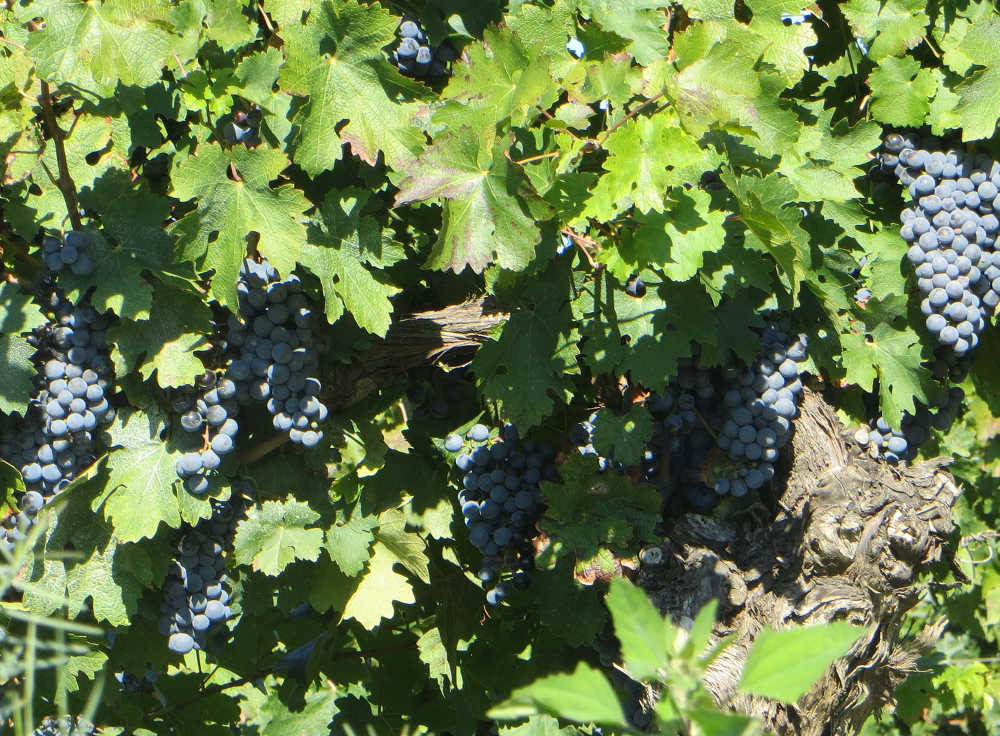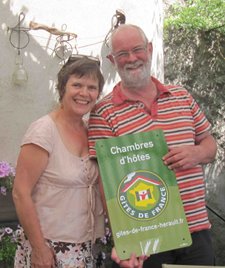An Irish Chef in France

This month: A little introduction to The Wines of the Languedoc - there are lots of them selling in Ireland now, as Martin noticed on his last visit.
We are just back from a winter break in the Cote d’Azur, that part of the country which is known, outside France, as The French Riviera. This is a wonderful part of France and one that has enjoyed a healthy tourist trade for many many years.
This, in part is due to the gentle climate it enjoys even in winter, being sheltered from the cold northern winds by the towering Alps - unlike its neighbours on the Rhone in Provence which are whipped by the Mistral. This tourist money is of course reflected in prices here and we noticed that things are a lot dearer than in our native Languedoc.
The most noticeable price difference we found was the cost of wines, particularly in the neighbouring Rosés from Provence which seem to us to come in at about twice the price of similar Rosés from Languedoc.
Of course it could be argued that the quality is reflected in the price but, even though we did enjoy our glasses of local pinks we felt that the price hike which Provencal enjoys had more to do with the name Rosé de Provence than the inherent quality. And thereby hangs a tale.
The Languedoc has a more intense cultivation of vines per square hectare than anywhere else on earth, the area has been growing grapes for hundreds of years and has learned that the more grapes you grow, the more wine you make and sell, the richer you get.
In the 19th Century the Languedoc was the largest producer of wine anywhere. At that time you must appreciate that the average French worker was being advised to try not to drink more than a litre of wine PER DAY, and also being advised to avoid, at all costs the poisonous effects of water consumption.
Languedoc rose to this challenge by specializing in quantity rather than quality in its wine production and so it became the major wine making part of France.
Of course this quantity production came at the expense of quality and so its reputation became wine which was cheap, because of its high production, but also was of low quality.
This was boom time in the Languedoc and the evidence is everywhere. Our village and the nearby town of Beziers are full of impressive maisons de Vignerons, large houses of the bourgeoisie, built in the second half of the 19th Century when they sold so much wine to the rest of the country that they could nearly afford to print their own money. That this was done on the back of the workers is true, there was a huge vine workers strike here in 1906 which did improve the workers lives a little.
But, as the twentieth century progressed, the wines of Languedoc began to come under pressure from both the new world and from the old. Countries like Spain and Italy, Australia, New Zealand, America - North and South - began to compete with Languedoc for the cheap end of the market.
Because Languedoc, with some noble exceptions, had decided to throw their efforts into quantity and to growing the vines which produced the greatest yield, they were found lacking. Right up to the sixties, when I had my first holidays in France, you could buy wine from this area for very small money. I remember a wine from Corbières called Le Velour d’Estomac (which it wasn’t) being sold in the supermarket for the modern equivalent of about 25 cent a litre.
However, for the last twenty or thirty years the wine makers of Languedoc have been making strenuous efforts to improve their quality. We see a lot of older vines being dug up and discarded and new vines being planted.
There have always been the noble exceptions: St Chinian and Faugères are good examples of wines, which consistently produced quality over the years and these marques are now well placed in the market, producing excellent quality and still extremely well priced.
Other areas like Pinet- with its distinctive Picpoul grape, have become runaway best sellers in the last few years.I can still buy wines here of excellent quality which are cheaper than any comparable wines from other parts of France, or indeed globally.
Sometimes fortune lands one in the right place at the right time !
-------------
 Martin Dwyer started cooking professionally over 40 years ago in the legendary “Snaffles Restaurant” in Dublin. After a time in a Relais Chateau in Anjou and in “The Wife of Bath” in Kent he opened his own much acclaimed restaurant, “Dwyers”, in Waterford in 1989. In 2004 he sold this and moved south to France where he and his wife Síle bought and restored an old presbytery in a village in the Languedoc. They now run Le Presbytère as a French style Chambre d’Hôte. Martin however is far too passionate about food to give up cooking so they now enjoy serving dinner to their customers on the terrace of Le Presbytère on warm summer evenings. Martin runs occasional cookery courses in Le Presbytère and Síle’s brother Colm does week long Nature Strolls discovering the Flora and Fauna of the Languedoc.
Martin Dwyer started cooking professionally over 40 years ago in the legendary “Snaffles Restaurant” in Dublin. After a time in a Relais Chateau in Anjou and in “The Wife of Bath” in Kent he opened his own much acclaimed restaurant, “Dwyers”, in Waterford in 1989. In 2004 he sold this and moved south to France where he and his wife Síle bought and restored an old presbytery in a village in the Languedoc. They now run Le Presbytère as a French style Chambre d’Hôte. Martin however is far too passionate about food to give up cooking so they now enjoy serving dinner to their customers on the terrace of Le Presbytère on warm summer evenings. Martin runs occasional cookery courses in Le Presbytère and Síle’s brother Colm does week long Nature Strolls discovering the Flora and Fauna of the Languedoc.
Le Presbytère can be seen at: www.lepresbytere.net;
email: martin@lepresbytere.net
Twitter: www.twitter.com/DwyerThezan





There are currently no comments
Leave a comment
Not a member? Register for your free membership now!
Or leave a comment by logging in with: